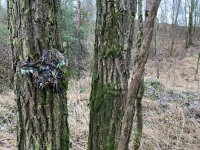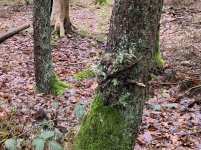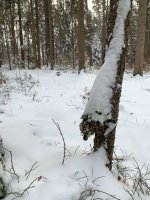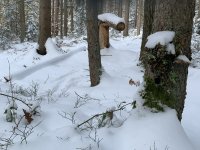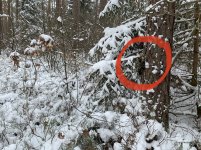Vollmeise
Well-known member
HiHo everybody,
For some time now I have been fascinated by the idea of not only detecting certain bird species acoustically with the help of autonomous audio recorders, but also receiving high-quality sound recordings.
My requirements:
Optional:
Technically not really a challenge though, such a device would still have to be invented.
The budget solution:
is called AudioMoth and is a small, inexpensive and proven recorder from UK-based Open Conservation Technology Ltd.
The advantages of the Audiomoth are its scheduled recording, the small size, the very long battery life and the low acquisition costs.
The sound quality of the Audiomoth is usable and is constantly being improved, since version 1.2 it is even possible to connect an external microphone.
A remote control / status query via cellular network is not possible, there is no integrated GPS, no possibility of playing sound mockups and no direct possibility of documenting the data from external sensors in an overall log.
The maker solution
My first thought more than a year ago was to build a recorder according to my requirements with the help of a small, inexpensive single-board computer. I spent a lot of time putting together a Raspberry Pi with external real-time clock, GPS module, status display, cellular connection and an excellent sound card for connecting external microphones (HIFIBERRY DAC + ADC PRO) and using the "Python" language to pack all my requirements into this small power bundle .
The result: at some point the recorder worked perfectly - under laboratory conditions. Until then, I installed components for 120.00 EUR and didn't even had a weatherproof housing or battery that could keep the Raspi alive for 1-2 weeks.
The smartphone solution
Few weeks ago, purely by chance, I read an article about apps with which you can automate an incredible variety of actions on the smartphone as soon as specified conditions occur. This can be, for example, a point in time, a certain battery level, the value of a sensor, the content of a message or practically any conceivable event that can be recorded by a smartphone.
What can an autonomous smartphone recorder achieve, what do you need, how much does it cost and - how does it sound?
Coming soon: Autonomous Field Recorder, PART II
Cheers, Vollmeise
For some time now I have been fascinated by the idea of not only detecting certain bird species acoustically with the help of autonomous audio recorders, but also receiving high-quality sound recordings.
My requirements:
- Programmable (start and duration of recording, recording interval, file name, etc.)
- Automatic log (device ID, recording data, location, weather data, etc.)
- Good sound quality (highly sensitive microphone, high signal / noise ratio, lossless compressed data format, at least 44.1 kHz sampling rate at 24 bit)
- Continuous operation possible for 1-2 weeks
- Weatherproof, robust and inconspicuous
Optional:
- Stereo/Ambisonic recording
- external microphone
- Play sound mockups
- Remote control / status query / data transmission via cellular network
Technically not really a challenge though, such a device would still have to be invented.
The budget solution:
is called AudioMoth and is a small, inexpensive and proven recorder from UK-based Open Conservation Technology Ltd.
The advantages of the Audiomoth are its scheduled recording, the small size, the very long battery life and the low acquisition costs.
The sound quality of the Audiomoth is usable and is constantly being improved, since version 1.2 it is even possible to connect an external microphone.
A remote control / status query via cellular network is not possible, there is no integrated GPS, no possibility of playing sound mockups and no direct possibility of documenting the data from external sensors in an overall log.
The maker solution
My first thought more than a year ago was to build a recorder according to my requirements with the help of a small, inexpensive single-board computer. I spent a lot of time putting together a Raspberry Pi with external real-time clock, GPS module, status display, cellular connection and an excellent sound card for connecting external microphones (HIFIBERRY DAC + ADC PRO) and using the "Python" language to pack all my requirements into this small power bundle .
The result: at some point the recorder worked perfectly - under laboratory conditions. Until then, I installed components for 120.00 EUR and didn't even had a weatherproof housing or battery that could keep the Raspi alive for 1-2 weeks.
The smartphone solution
Few weeks ago, purely by chance, I read an article about apps with which you can automate an incredible variety of actions on the smartphone as soon as specified conditions occur. This can be, for example, a point in time, a certain battery level, the value of a sensor, the content of a message or practically any conceivable event that can be recorded by a smartphone.
What can an autonomous smartphone recorder achieve, what do you need, how much does it cost and - how does it sound?
Coming soon: Autonomous Field Recorder, PART II
Cheers, Vollmeise
Last edited:




